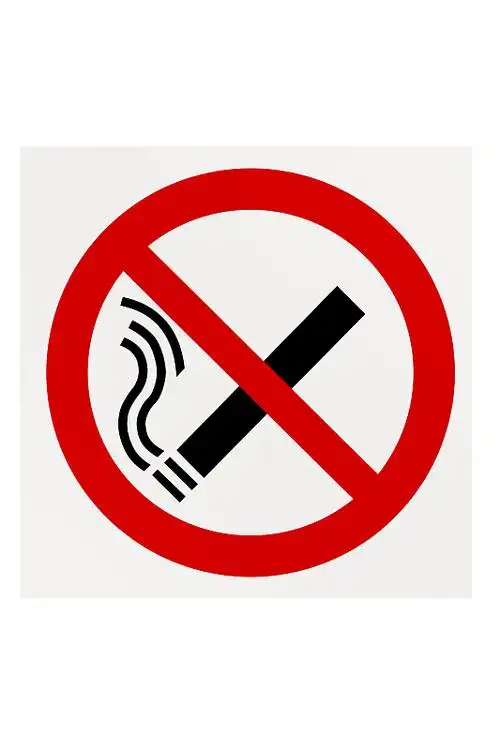The Unseen Rhythm: How Tobacco Use Amplifies Annual Surges in Vascular Resistance
We often discuss the health risks of smoking in broad strokes—lung cancer, heart disease, and emphysema. These are the well-known, dramatic finales of a long and destructive process. But what if we shifted our focus from the destination to the journey? What if we could observe the damage not as a single catastrophic event, but as a gradual, rhythmic worsening that repeats year after year? Emerging insights from vascular physiology suggest we can do just that, and the findings are alarming. A growing body of evidence points to a disturbing phenomenon: habitual tobacco use significantly increases the annual amplitude of the vascular resistance index. In simpler terms, smoking doesn't just raise your blood pressure; it makes the natural yearly fluctuations in your circulatory strain more extreme and dangerous.
To understand this, we must first break down the key players. Vascular resistance is a fundamental concept in how our circulatory system works. Imagine your blood vessels as a network of pipes. Vascular resistance is the force that your heart must overcome to push blood through these pipes, particularly the tiny arteries and capillaries known as arterioles. When these vessels are wide and flexible, resistance is low, and blood flows easily. When they constrict or become stiff, resistance goes up, forcing the heart to work much harder. This is a primary driver of hypertension (high blood pressure).
Now, let's consider the annual amplitude of increase. Our bodies are not static machines; they are dynamic systems influenced by countless cycles—daily (circadian), seasonal, and annual. Blood pressure and vascular tone naturally ebb and flow throughout the year. For a healthy individual, these fluctuations are mild. The "amplitude" refers to the height of that fluctuation—the difference between the yearly low point and the yearly high point in vascular resistance. A small, gentle amplitude is normal. A large, sharp amplitude, like a violent wave instead of a gentle swell, is a sign of a system under severe stress.
So, how does tobacco orchestrate this harmful amplification? The mechanism is a multi-pronged assault on the endothelial lining of your blood vessels—the delicate, single-cell layer that acts as the master regulator of vascular health.
The Direct Chemical Onslaught and Endothelial Dysfunction
With every puff of cigarette smoke, a cocktail of over 7,000 chemicals enters the bloodstream. Two of the most notorious, nicotine and carbon monoxide, are primary architects of increased vascular resistance.
Nicotine is a powerful sympathomimetic agent. It stimulates the release of adrenaline and noradrenaline, hormones that cause immediate vasoconstriction—the tightening of blood vessels. This creates an instant, sharp spike in vascular resistance and blood pressure. But beyond this acute effect, the chronic presence of nicotine damages the endothelium itself. A healthy endothelium produces a vital gas called Nitric Oxide (NO), a potent vasodilator that signals blood vessels to relax and widen. Tobacco smoke directly impairs the production and availability of NO, leaving the vessels chronically predisposed to constriction.
Carbon monoxide, meanwhile, binds to hemoglobin in red blood cells about 200 times more avidly than oxygen. This reduces the blood's oxygen-carrying capacity, creating a state of mild hypoxia (low oxygen). The body responds to this by further constricting blood vessels in an attempt to redirect the limited oxygen to vital organs, thereby ratcheting up the vascular resistance index even further.
The Insidious Role of Oxidative Stress and Chronic Inflammation
The damage doesn't stop with direct chemical interference. Tobacco smoke is a prolific generator of free radicals, unstable molecules that cause oxidative stress. This oxidative barrage directly damages the endothelial cells, worsening the dysfunction. Furthermore, the injured endothelium becomes a hotspot for chronic inflammation in blood vessels. It starts expressing adhesion molecules that beckon inflammatory cells (like monocytes) to stick to the vessel wall and infiltrate it. This kicks off a vicious cycle of inflammation and injury, promoting the development of atherosclerosis—the buildup of fatty plaques.
These plaques are not just passive blockages; they are active, inflammatory lesions that dramatically stiffen and narrow the arteries. This structural change creates a permanent, baseline increase in vascular resistance. The vessel walls lose their elasticity, becoming less able to accommodate changes in blood flow and pressure, thus contributing to a heightened annual amplitude of vascular resistance.
Connecting the Dots: The Annual Cycle of Strain
Now, let's integrate these mechanisms into the annual picture. Consider the various stressors life throws at us throughout the year. Winter often brings cold weather, which is a known vasoconstrictor. The holiday season can introduce dietary indiscretions, increased salt intake, and psychological stress. For many, summer involves heat stress and dehydration. In a healthy vascular system, the endothelium is resilient enough to buffer these stressors, leading to only minor, manageable increases in vascular resistance.
However, in a smoker's body, the system is already teetering on the edge. The endothelium is dysfunctional, the vessels are chronically inflamed and constricted, and the nervous system is primed for overreaction. When an annual stressor like winter cold arrives, the smoker's vascular system doesn't experience a gentle nudge; it experiences a violent shove. The already-compromised vessels constrict far more severely. The inability to produce adequate Nitric Oxide means the vasodilatory "brakes" are failing. The result is a much steeper rise in the vascular resistance index during that time of year compared to a non-smoker.
This is the crux of the increased annual amplitude of increase. The smoker's vascular system loses its resilience and becomes hyper-reactive to normal environmental and physiological cycles. Each year, the peaks of vascular resistance become higher and more dangerous, placing immense strain on the heart and dramatically accelerating the path to hypertensive crisis, heart failure, or stroke. This tobacco-induced vascular hyper-reactivity is a silent, rhythmic killer, amplifying the risk of cardiovascular events linked to seasonal blood pressure variations.
A Path to Resilience: Mitigating the Amplitude
The most powerful and immediate intervention is, unequivocally, smoking cessation. The human body possesses a remarkable capacity for healing. Within just weeks of quitting, endothelial function begins to recover, NO production improves, and the intense inflammatory drive starts to subside. Studies have shown that blood pressure and vascular reactivity can improve significantly within the first few months.
Beyond quitting, a heart-healthy lifestyle can help repair the damage and "dampen" the dangerous amplitude. This includes:
- Regular Aerobic Exercise: Physical activity is one of the most potent stimulators of endothelial NO production, directly countering the effects of tobacco.
- An Antioxidant-Rich Diet: Consuming fruits, vegetables, nuts, and seeds rich in antioxidants (like vitamins C and E) helps combat the oxidative stress inflicted by years of smoking.
- Stress Management: Techniques like meditation, yoga, and deep breathing can help modulate the sympathetic nervous system overactivity that contributes to vasoconstriction.
- Regular Monitoring: For former smokers, tracking blood pressure throughout the year can help identify any lingering patterns of high amplitude, allowing for proactive management with a healthcare provider.
In conclusion, viewing tobacco's impact through the lens of the annual amplitude of increase in the vascular resistance index provides a more dynamic and nuanced understanding of its harm. It's not a static, one-time elevation of risk, but an active, repeating cycle of exaggerated strain that progressively weakens the cardiovascular system. By recognizing this pattern—this unseen, dangerous rhythm imposed by tobacco—we can better appreciate the urgent need for intervention and the profound benefits of reclaiming the natural, gentle rhythms of a healthy body. The goal is not just to lower the average blood pressure, but to calm the storm within the vessels, ensuring that the passage of each season is met with resilience, not a crisis.











